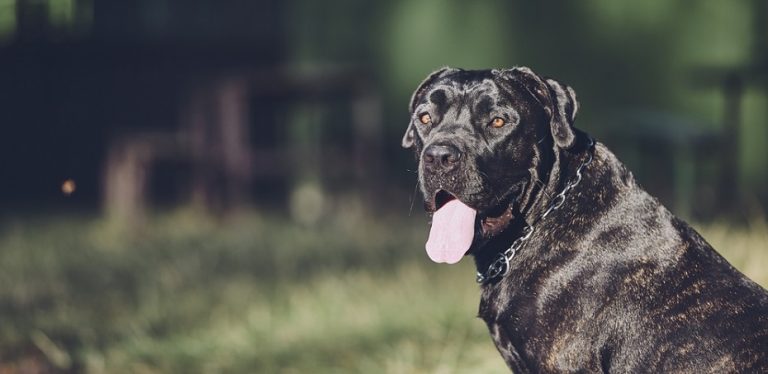What You Should Know About Dachshund Life Expectancy
There are many reasons for choosing a Dachshund as your pet, their spirit, intelligence, and good looks.
Many people also love them for their size and cute appeal. But there is another reason for choosing a Dachshund.
They are one of the longest living dog breeds in the world! So what should you know about Dachshund life expectancy?
None of us want to be separated from our dogs and choosing a Dachshund means they will be part of our family and our lives longer than many other breeds of dog.
But there are things we can do to help them live even longer, healthier and happier lives.
We take a look at the factors that influence your Dachshund’s lifespan such as genetics, breeding, diet, exercise and common health issues that you should be aware of.
So, if you want to help your Doxie reach their optimum age in a healthy and happy way, read on.
Genetics & Breeding
Possibly the biggest contributor to the health of a Dachshund is the genetics that he gets from his parents.
The breed is one of the longest lived dogs, and they can live beyond 20 years of age however the average lifespan of a Dachshund is typically 12-15 years.
While genetics are not the only factor that will influence the lifespan of a Dachshund they do play a very important role in the dog’s longevity.
This is why it is important to only ever get your Dachshund from a reputable and registered breeder.
You shouldn’t just accept that someone who claims to be a Dachshund breeder and who may be licensed will be the right source for your puppy.
It is a good idea to do some research within the Dachshund community and find out from people who are really in the know.
With a trustworthy breeder you will be able to check the health of the parents and if there are any issues with the puppy’s potential health you will know right from the beginning.
Some people may be put off by genetic predispositions to certain conditions, but others are happy to plan in advance with their vet for the potential problem to manifest and deal with it.
Care
How a Dachshund is cared for will have a huge impact on their health and also on their life expectancy.
From the food that you feed your dog to the amount of exercise they get, and even how they move around your home can all affect their health and longevity.
If you have found your Dachshund through a reputable breeder then hopefully they will have had a good start in life, and you will want to do your best to continue with that level of care when you become a pet parent.
Taking on a dog will require a large commitment and the Dachshund breed has certain issues that you will need to take into consideration for the best care of your Doxie.
You should take the time to research the best diet and nutrition for Dachshunds, what their ideal weight should be, how much exercise they need and be aware of any health conditions that are common to the breed.
Registering with a vet that is good with dogs and perhaps joining a Dachshund community will also give you access to up-to-date information and advice on the breed.
Being informed about the needs of your Dachshund will allow you to take the best care of him and help to prolong his life with the best care you can provide.
Diet & Nutrition
Deciding what type of food to feed your Dachshund is central to their health and wellbeing.
The nutrition that your dog gets from his meals will affect his growth, muscle, tissue and bone formation. It can affect his eyesight and brain development too.
You can choose to feed your dog a diet of raw food, canned dog food or kibble biscuits. Alternatively you can give him a mixture of wet and dry food.
Dachshunds need a good proportion of protein and in particular, lean protein. This helps them with the development of healthy bones and muscle growth.
As they are predisposed to spine and muscle issues this is an important part of a Dachshund’s diet.
Your Doxie will also need carbohydrates but these need to be carefully controlled as this breed tends to gain weight quickly.
This is not only unhealthy for them but also puts additional strain on their short legs and presents challenges for their spine and joints.
To benefit their eyesight and brain development a good source of omega-3 and other fish oils should be included in their diet.
By keeping a careful watch on what your Dachshund is eating you can improve their life expectancy and prevent them developing issues resulting from poor nutrition.
Weight
As we have mentioned Dachshunds are naturally susceptible to gaining weight and this is detrimental to their health. It can also shorten their expected lifespan by around three years.
Approximately 20% of Dachshunds are overweight and therefore suffer a lot of the common health problems associated with obesity.
The problem is exacerbated if your dog is not given enough exercise and if they are fed a high fat diet.
Dachshunds which have been spayed or neutered are at greater risk of weight gain as they can become more food oriented.
While many people show love to their pets by giving them treats this can actually have the opposite effect on your Dachshund and end up causing them pain and discomfort.
Keep in mind that overweight Doxie’s lose around three years from their expected lifespan.
With weight gain your Doxie will be carrying a heavier load on their joints and this can cause them hip pain leading to limping.
A sedentary lifestyle is not healthy for people, and it is certainly not healthy for your Dachshund.
To ensure that your dog doesn’t put on any unwanted weight it is important that you exercise them for at least thirty minutes per day.
This can be done in two sessions of fifteen minutes each which may be easier for you and for your Doxie.
Exercise
As we have seen your Dachshund should be exercised for thirty minutes per day. This can be done in one walk or split into two, of fifteen minutes each.
You can also play with your Doxie and encourage them to exercise through playtime.
The Dachshund’s history is as a hunting dog, and so they are naturally energetic and active.
It can be easy to assume that such a small dog has no need for exercise, but this is not true.
A walk is very important not just as physical exercise but also as mental stimulation for your dog.
Being kept indoors or in the garden with nothing new to interact with is not good for their mental state and may make them difficult to socialize.
Exercise is vital to develop your Doxie’s muscle strength and this will have a direct effect on their bone condition.
If the muscles are insufficiently supporting the skeleton then the joints of their bones will take more of the strain and this will cause them problems and pain.
To maintain a healthy weight your Doxie needs to be exercised daily.
However, you should refrain from the type of exercise that involves jumping up and down from heights. This can have a detrimental effect on their spines and joints.
Invest in a pet ramp or steps for getting up and down from furniture to protect their joints, spine and legs.
Exercising your Dachshund can help them live longer and healthier lives, this is motivation enough to get out there and walk them for half an hour a day.

Environment
Caring for your Dachshund means creating the right environment for them to thrive.
This involves the right diet, enough exercise, keeping them up to date with vaccinations and medications and making sure that their home is where they are loved and cared for.
Anyone who chooses a Dachshund should be aware of the characteristics of the breed, their temperament, physical limitations and health needs.
If you are not sure about any of these things then it is important to inform yourself before taking on one of these dogs.
Apart from the obvious needs of food, shelter and exercise there are considerations about your home.
Because of their short legs, tendency towards spine and joint problems it’s not a good idea to have your Dachshund climbing lots of stairs or jumping up on furniture.
If you have a house with lots of steps, maybe invest in a ramp for your Doxie to navigate these areas of your home or keep them out by using a stair gate.
The added wear and tear on their spine can cause back issues and result in pain and discomfort for your dog.
Common Health Issues In Dachshunds
Despite their longevity as a breed there are a few conditions that Dachshunds are predisposed to as a result of their genetic make up or their body shape.
This can range from skin conditions and eye problems to disc disease and diabetes.
Their skeletal design of an elongated body and short legs creates problems with the Dachshunds back.
This results in one in four Doxies having back problems at some point in their lives.
In fact their body shape is a dwarfism trait and is known as chondrodysplasia.
This genetic abnormality is also present in Corgis and Basset Hounds.
Apart from back and joint issues Dachshunds can also suffer from diabetes, hypothyroidism and Cushing’s disease.
This doesn’t mean that every Doxie is potentially going to develop all of these conditions, but the breed is predisposed to a number of health issues that can impact on their life expectancy.
As a responsible pet parent it is important for you to be aware of these things so that you can look out for signs and symptoms.
So it is essential for your Dachshund’s health and longevity that they have regular vet visits for checkups. Any issues should be investigated straight away.
Intervertebral Disc Disease
Intervertebral disc disease is the most common musculoskeletal condition that Dachshunds suffer from.
It is caused by the degeneration of the intervertebral discs in the lower back either through compression or disease.
A Dachshund with this disease will have severe weakness and sometimes paralysis in their back legs.
Doxies are ten times more likely to develop this condition than any other breed of dog.
There are treatments available, and the correct one will depend on the severity of the condition.
These treatments can range from pain management to anti-inflammatory medication. In some cases surgery may be required.
Although intervertebral disc disease is a serious condition and prevalent among Dachshunds this doesn’t always stop these spirited little dogs.
Many who have become paralyzed in their hind legs are fitted with a doggy wheelchair or cart. This lets them lead as normal a life as possible.
The symptoms of intervertebral disc disease are:
- Weakness in their back legs
- Limping
- Shaking or shivering
- Refusal to move or stand up
- Pulled back head or arched back
- Inability to bend neck down to eat or drink
- Dragging their back legs
- Whimpering when picked up or petted
- If your Dachshund has any of these symptoms take them to your vet as soon as possible.
Issues With Joints And Hips
As we have seen, the skeletal design of Dachshunds gives rise to a number of conditions and problems with joints and hips are another issue for these little dogs.
Hip dysplasia is a condition that causes the bones of the hip ball and socket joints to rub together.
Larger dogs can suffer from this, but Dachshunds are also prone to it due to their body shape and skeletal design.
This is sometimes exacerbated by a Doxie that is very active or is walked excessively.
Poor nutrition can also be a factor and this is why an appropriate diet for a Dachshund is so important.
They need lean protein and good sources of omega-3 to help prevent certain joint conditions.
Back sprain can also cause injury to your Dachshund. If he is doing a lot of jumping up and down on furniture or climbing stairs repeatedly, this can cause the muscles in his back to become overworked.
The best cure for back sprain is crate rest. Depending on the extent of the injury, this can be between one week to six weeks.
Anti-inflammatory medications may be prescribed to relieve the pain and allow the muscles to relax and repair themselves.
Eye Issues
Unfortunately, Doxies are prone to a lot of eye issues such as progressive retinal atrophy or PRA, cataracts and glaucoma.
Progressive retinal atrophy is one of the most catastrophic eye conditions for Dachshunds. Its main feature is the degeneration of the retina and this inevitably leads to blindness. There is currently no known cure for this illness.
PRA is a genetic and therefore inherited disease. One of the first symptoms is night blindness, so if you notice your Dachshund struggling to see in the dark, or dimly lit rooms, then you should take him to a canine ophthalmologist.
Another symptom is tripping over or stumbling as the Doxie’s depth perception will begin to be affected as the disease takes hold.
Before breeding, a Dachshund should be tested for the recessive genes that cause PRA and if positive, they should not be bred.
Cataracts can develop as your dog gets older. This eye disorder is characterized by a gray or white film that develops over the eye. Sometimes this can happen in younger dogs too.
How severe a cataract is will determine the extent to which it will impair your Dachshund’s sight and what treatment should be given.
Glaucoma is a condition that causes excess fluid in the eye which then puts pressure on the inside of the eye. This is painful for your dog and can lead to blindness.
Cushing’s Disease
Hyperadrenocorticism or Cushing’s disease is a chronic illness which develops over time. It is the overproduction of cortisol. Symptoms in dogs will be an increased thirst, panting, reduced activity, hair loss and skin problems.
Dachshunds are not the only dogs to be predisposed to Cushing’s disease, Boston Terriers, and Boxers are also prone. It is more likely to manifest in older dogs.
If untreated hyperadrenocorticism can cause your Dachshund to become increasingly susceptible to infections. He will also become more lethargic and tired.
However, there are good medications for this condition and if caused by a tumor on the pituitary or adrenal glands then surgery may be an option.
It is important to take your dog to the vet if you notice any of the symptoms of this disease. The vet will be able to test them for the condition as there are some conditions that have similar symptoms. Therefore a test is the only way to get a definitive diagnosis.
There are implications for your Doxie’s lifespan if he has this condition as it can cause complications such as diabetes and kidney damage.

Diabetes
Sadly diabetes is not only a disease that affects people but also animals including dogs. Dachshunds are more prone to this condition however as they are a smaller dog and the condition has an above average occurrence in small dogs.
Diabetes cannot be cured, but it can be managed successfully. Diabetes mellitus, or ‘sugar diabetes’ is the most common type found in Dachshunds and is a metabolism disorder.
This means that the body cannot process the food it receives into energy.
The symptoms of diabetes that you should watch out for in your Doxie are:
- Excessive thirst
- Increased urination
- Weight loss
- Increased appetite
Advanced diabetes can cause more severe symptoms such as:
- Lack of energy
- Loss of appetite
- Depressed attitude
- Vomiting
The impact of diabetes on your Dachshund can be serious and this is why early diagnosis and treatment are so important.
The effects of the condition on their overall health may include:
- Cataracts
- Urinary tract infections
- Seizures
- Enlarged liver
- Kidney failure
- Ketoacidosis
A simple blood test can be done by your vet to test your Doxie for diabetes. This will enable you to manage their condition and help to prolong their life expectancy.
Hypothyroidism
Hypothyroidism is a condition in which the thyroid gland does not function properly and therefore does not produce enough thyroid hormones. It is often mistaken for obesity.
Lymphocytic thyroiditis is the most common form of hypothyroidism in Dachshunds and will normally manifest itself between the age of one and three years.
With this form of hypothyroidism the dog’s own immune system attacks the thyroid gland.
If your dog is diagnosed with this condition they will be prescribed medication to manage it.
The symptoms of hypothyroidism include:
- Weight gain
- Hair loss
- Dry skin
- Severe changes in behavior
- Sluggishness or tendency to sleep a lot
If you notice any of these symptoms then you should take your Dachshund to the vet so that they can carry out blood tests.
There are other conditions that mimic the symptoms of hypothyroidism, so it may take a few tests to determine whether your Doxie has this illness.
Treatment for this condition is essential for your Dachshund’s life expectancy. The thyroid hormone affects almost every organ in the body.
A Doxie with untreated hypothyroidism can develop high cholesterol, slowed heart rate, and decreased immune function.
With treatment however, the Dachshund’s life expectancy and quality of life will be greatly improved.
How To Improve Your Dachshunds Life Expectancy
You will want to do all you can to increase your Dachshund’s life expectancy and there are many ways that you can help him to live a long and healthy life.
As we have discussed there are a lot of conditions that your Doxie is strongly predisposed to especially in relation to their skeletal design, body shape and inherited disorders.
For this reason it is important to get your Dachshund from a reputable breeder.
This way you can get access to information about your potential puppy’s parents and their health, which will alert you to any issues.
Make sure you register your Dachshund with a good veterinarian practice and ensure that your Doxie receives all of his immunizations.
Find the best possible diet for your Dachshund. This may be commercial dog food, raw food or homemade but ensure the balance is correct with the right amount of lean protein.
Right alongside the importance of a good diet for your dog is the need for adequate and appropriate exercise.
Just because your Dachshund is small does not mean they don’t need exercise. They should be walked for thirty minutes per day on average to maintain a healthy weight.
This prevents unnecessary excess weight and stress on their spine and joints. These things can help your Dachshund live longer.
Final Thoughts
Giving your Dachshund the best life they can have will not only make them happy but will give you many years of happiness with a faithful and loyal companion.
We hope this guide to things that you should know about your Dachshund’s life expectancy has been helpful and will allow you to care for your Doxie for many years to come.






